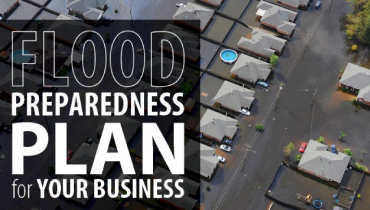
Rainbow Restoration emphasizes the importance of a comprehensive flood preparedness plan for businesses to minimize damage and ensure continuity. Key steps include:
|
Natural and man-made floods are the top two most common disasters experienced across the U.S. In the past five years, every state has experienced natural flood-related disasters such as coastal, river or flash flooding, and 20% of all insurance claims are accountable to floods of man-made origin (plumbing and appliance leaks, sewage backups). Despite the prevalence of floods, most businesses remain unprepared. Statistics show, of businesses closing in response to a disaster, a staggering one-in-four never re-open. Flood plans, like your fire evacuation preparedness plan, are key not only to mitigating the very real property and health risks of common flood-related disaster, but key to your future success.
Business Have Unique Flood Preparedness Needs
A flood emergency preparedness plan will be quite different for a construction zone than an office building or industrial facility. Each site and industry suffers unique risks. Industry-specific resources are essential to planning success, as is staff training. A well-informed staff can prevent confusion and added risks to employees and property in the event of disaster.
The Most Basic Flood Evacuation Plan Should Include:
- The capacity for quick response.
With personnel in-charge of monitoring man-made possibilities, and an NOAA Weather Radio or other news resource for natural events. - A basic disaster supply kit.
This includes emergency and medical supplies, as well as enough food and water to last at least 72 hours. Preparedness training at work should likewise instruct employees on preparing their own mobile kit, for preparation to shelter-in-place for 24 hours in the event of emergency. Ready.gov offers a printable and online list. - Plan development and training.
All employees should know what to do in an emergency, including disaster-specific evacuation and emergency response procedures. Assign specific employees (and backup personnel) to key tasks, such as emergency shut-down of equipment and power sources, and performing a roll-call. Exercises and drills to cement skills and uncover potential issues should be regularly performed, and flood and other emergency action plans reviewed and updated regularly. Clearly post and provide employees with paper copies of plans. - Emergency contact information.
Ensure all employees have a list of key telephone numbers. Blank business cards sheets from the local office supply are a convenient, easy way to provide a wallet-size list. - Additional guidance.
This is not an all-inclusive list, and the importance of the need for industry-specific measures cannot be stressed enough. OSHA, Ready.gov, the CDC and IBHS are great resources.
Flood Danger Does Not End When Waters Recede
Post-flood cleanup is hazardous. Cleanup crews are at enhanced risk of injury and illness due to exposure to debris hazards and contaminated water. With water, mold and bacteria proliferation increase with each hour left unaddressed. Quick remediation, proper safety gear and on-site sanitary and medical provisions are essential to treating clean-up related injury.
Do you have a trusted water damage and mold remediation professional as part of your flood plan? The experts at Rainbow Restoration® can help you get back up and running fast. Contact us today.
